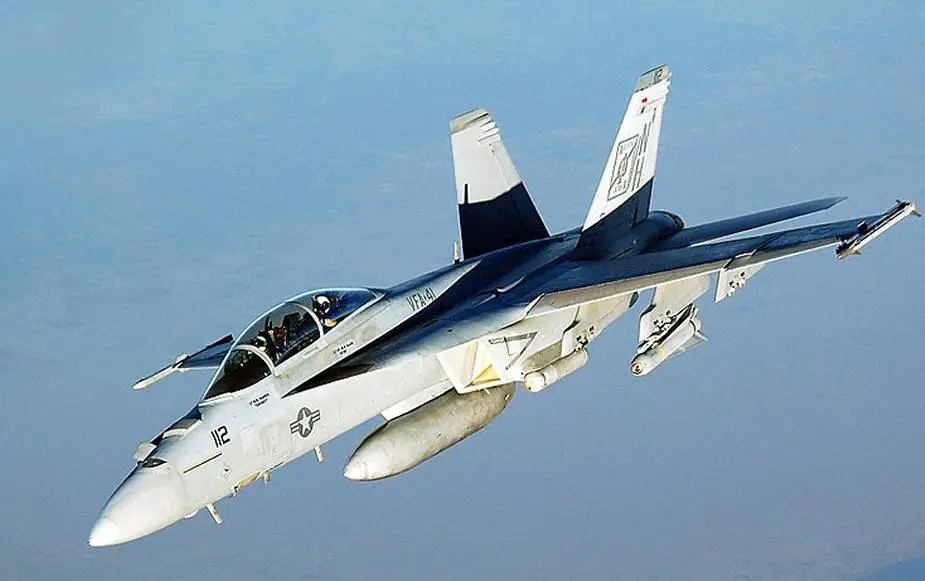The U.S. Department of Defense on April 19 announced that Boeing is awarded a $313,434,366 modification to a previously awarded cost-plus-incentive-fee, cost-plus-fixed-fee, indefinite-delivery/indefinite-quantity contract. This modification increases the ceiling to provide non-recurring engineering, system engineering program management, and additional aircraft inductions in support of extending the service life for up to 25 F/A-18 E/F Super Hornets from 6,000 flight hours to 10,000 flight hours and incorporating Block III avionics capabilities.
Follow Air Recognition on Google News at this link
 A US Navy F/A-18F Super Hornet of Strike Fighter Squadron 41 (VFA-41), Black Aces, Naval Air Station (NAS) Lemoore, California (CA), conducts a mission over the Persian Gulf. The Hornet is armed with an AIM-9 Sidewinder missile on the wingtip and an AGM-65 Maverick missile on the pylon. Tucked under the intake is an AN/ASQ-228 ATFLIR (Advanced Targeting Forward Looking InfraRed) pod. Also under the fuselage, a 370-gallon External Fuel Tank (Picture source: Wikipedia/Navy Camera Operator: TSGT ROB TABOR, USAF)
A US Navy F/A-18F Super Hornet of Strike Fighter Squadron 41 (VFA-41), Black Aces, Naval Air Station (NAS) Lemoore, California (CA), conducts a mission over the Persian Gulf. The Hornet is armed with an AIM-9 Sidewinder missile on the wingtip and an AGM-65 Maverick missile on the pylon. Tucked under the intake is an AN/ASQ-228 ATFLIR (Advanced Targeting Forward Looking InfraRed) pod. Also under the fuselage, a 370-gallon External Fuel Tank (Picture source: Wikipedia/Navy Camera Operator: TSGT ROB TABOR, USAF)
Work will be performed in San Antonio, Texas (95%); and St. Louis, Missouri (5%), and is expected to be completed in February 2025. No funds are being obligated at the time of award; funds will be obligated on individual orders as they are issued. The Naval Air Systems Command, Patuxent River, Maryland, is the contracting activity.
Designed and initially produced by McDonnell Douglas, the F/A-18E and F/A-18F Super Hornet first flew in 1995. Low-rate production began in early 1997 with full-rate production starting in September 1997, after the merger of McDonnell Douglas and Boeing the previous month. The Super Hornet entered fleet service with the U.S. Navy in 1999, replacing the Grumman F-14 Tomcat, which was retired in 2006; the Super Hornet has served alongside the original Hornet. The Royal Australian Air Force (RAAF), which has operated the F/A-18A as its main fighter since 1984, ordered the F/A-18F in 2007 to replace its aging General Dynamics F-111C fleet. RAAF Super Hornets entered service in December 2010. In February 2023, Boeing announced plans to end production of the Super Hornet in 2025.
















